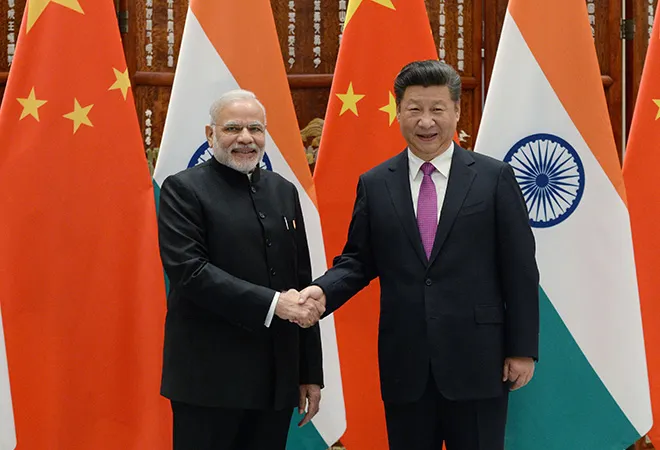
The Sustainable Development Goal (SDG) 7 highlights ‘affordable and clean energy's’ indispensable role in development and focuses on energy availability, access, affordability and efficiency. This goal encompasses the comprehensive target of energy security, “the uninterrupted availability of energy sources at an affordable price” as defined by the International Energy Agency. Short term energy security would mean prompt conscientious reaction to energy demand-supply imbalances while long term security would involve investments in the power sector in alignment with sustainable economic growth. SDG 7 brings under the same radar the three aspects of sustainomics, as rightly pointed out by Ban Ki-moon: “Energy is the golden thread that connects economic growth, social equity, and environmental sustainability. With access to energy, people can study, go to university, get a job, start a business – and reach their full potential.”
Short term energy security would mean prompt conscientious reaction to energy demand-supply imbalances while long term security would involve investments in the power sector in alignment with sustainable economic growth.
The UN Sustainable Development Solution Network SDG Report 2018 scores India at 54.0 and China at 69.1 in terms of the achievement of SDG 7. In the domain of energy, while India’s performance is more or less stagnated, China’s is moderately increasing, but not at a feasible rate. Deliberations on the Sino-Indian cooperation on energy opportunities have been endorsed vociferously for close to a decade now. However, in the purview of SDG 7 as well as the successive reports on the country wise performances, a contemporary revisionist approach may be required for Sino-Indian partnerships on energy cooperation to facilitate energy structure transformation in the long run. In terms of energy, the main overlapping areas for both the nations lie in the growing demand-supply imbalance leading to concerns of long term energy security and the surging import dependency. Both the countries should base their bilateral ties on such common grounds, to enhance partnerships on both upstream production of energy resources as well as downstream activities such as transmission and distribution of gas, refinement, marketing of petroleum products, creating translational networks of energy pipelines, etc.
A contemporary revisionist approach may be required for Sino-Indian partnerships on energy cooperation to facilitate energy structure transformation in the long run.
The immense need for partnerships between India and China to ameliorate energy security risks is highlighted by the Global Energy Institute’s Energy Security Risk Scores of 2016 where both India (ranked at 20) and China (ranked at 15) fall in the bottom half of the ‘25 Large Energy Using Countries’. Acknowledging the linkages of SDG 7 with the other goals, a report submitted to the Ministry of Environment, Forests and Climate Change, Government of India in 2015, underscores that the estimated financial gap in implementing SDG 7 in India stands at US$ 406 billion. Both the countries can actively turn toward international cooperation for blended finance programmes that have emerged as an excellent solution for bridging the SDGs’ budget deficits.
Recognizing the need for innovations for green and sustainable growth transitions, the two nations launched the China-India Low Carbon Study in 2012 – a collaboration between the National Development and Reform Commission (NDRC) of China and The Energy and Resource Institute (TERI), India. Examples of collaborative projects between China National Petroleum Corporation (CNPC) and India’s Oil and Natural Gas Corporation (ONGC) include oil project investments in Sudan, Yadavaran oil fields in Iran, Petro-Canada energy assets in Syria, etc. In 2006, ONGC and China Sinopec jointly acquired stakes of Columbian oil company, Omimex de Colombia for US$ 850 million.
Sino-Indian partnerships should also harness business solutions in alignment with sustainable infrastructure development, such as, renewable energy technology, amongst others. The Business and Sustainable Development Commissions Report 2017 identifies 17 business opportunities associated with energy challenges and estimates their aggregate potential value in 2030 at US$ 4.3 trillion at current prices. Crowding in the private sector and public-private partnerships both at the national and international levels have immense potential for businesses in the energy sector. Both China and India come under the category of the world’s largest energy consuming economies, and hence complementarities associated with market opportunities aligned with energy security is of immense importance for both the countries. The global energy consumption patterns for India and China are projected to rise as seen in the following graphical representation:
 Source: U.S. Energy Information Administration
Source: U.S. Energy Information Administration
India’s non-participation in China’s ‘One Belt, One Road’ initiative which has huge potential for reframing global energy cooperation, is not expected to hinder alliances between the two countries. While China’s energy demand might fall in the future due to its demography and deviation from investment led growth, most of the business opportunities associated with the SDG 7 lie with the developing countries with large market sizes, such as India. As countries included among the world’s top oil importers, India and China have often collectively bargained for better prices in the global oil market. Iran, being crucial for the energy security of both the nations, has caused huge economic losses due to supply side disruptions following the recent US sanctions. Against this backdrop, India and China have created a joint working group on oil and gas - the first cooperative institutionalized setup on energy issues, following the recent visit of the deputy chief of China’s National Energy Administration to New Delhi.
A stronger focus on SDGs in the context of soft power and trade enhancement will be one of the major drivers of Sino-Indian partnership in the near future. Both countries have a substantial role to play for energy cooperation on multilateral platforms such as BRICS and the G20 Global Energy Governance agenda. The way forward for both the countries to work on the bilateral ties while leveraging on their individual comparative advantages in expanding energy sector trade and investments on both sides.
A stronger focus on SDGs in the context of soft power and trade enhancement will be one of the major drivers of Sino-Indian partnership in the near future. Both countries have a substantial role to play for energy cooperation on multilateral platforms such as BRICS and the G20 Global Energy Governance agenda.
The Sino-Indian partnership on various development agendas is founded on the long shared historical and economics association between India and China. These two most populous countries of the world will play a crucial role in shaping the energy, economic and environmental dynamics of the world in the 21st century. Both the countries face similar driving forces in terms of solving the complicated inter-linkages between population growth, economic development, security and international partnerships in the realm of energy. The bilateral partnerships in reducing competition and promoting energy cooperation will influence the global energy governance trends in the future.
The views expressed above belong to the author(s). ORF research and analyses now available on Telegram! Click here to access our curated content — blogs, longforms and interviews.




 Source: U.S. Energy Information Administration
Source: U.S. Energy Information Administration PREV
PREV


